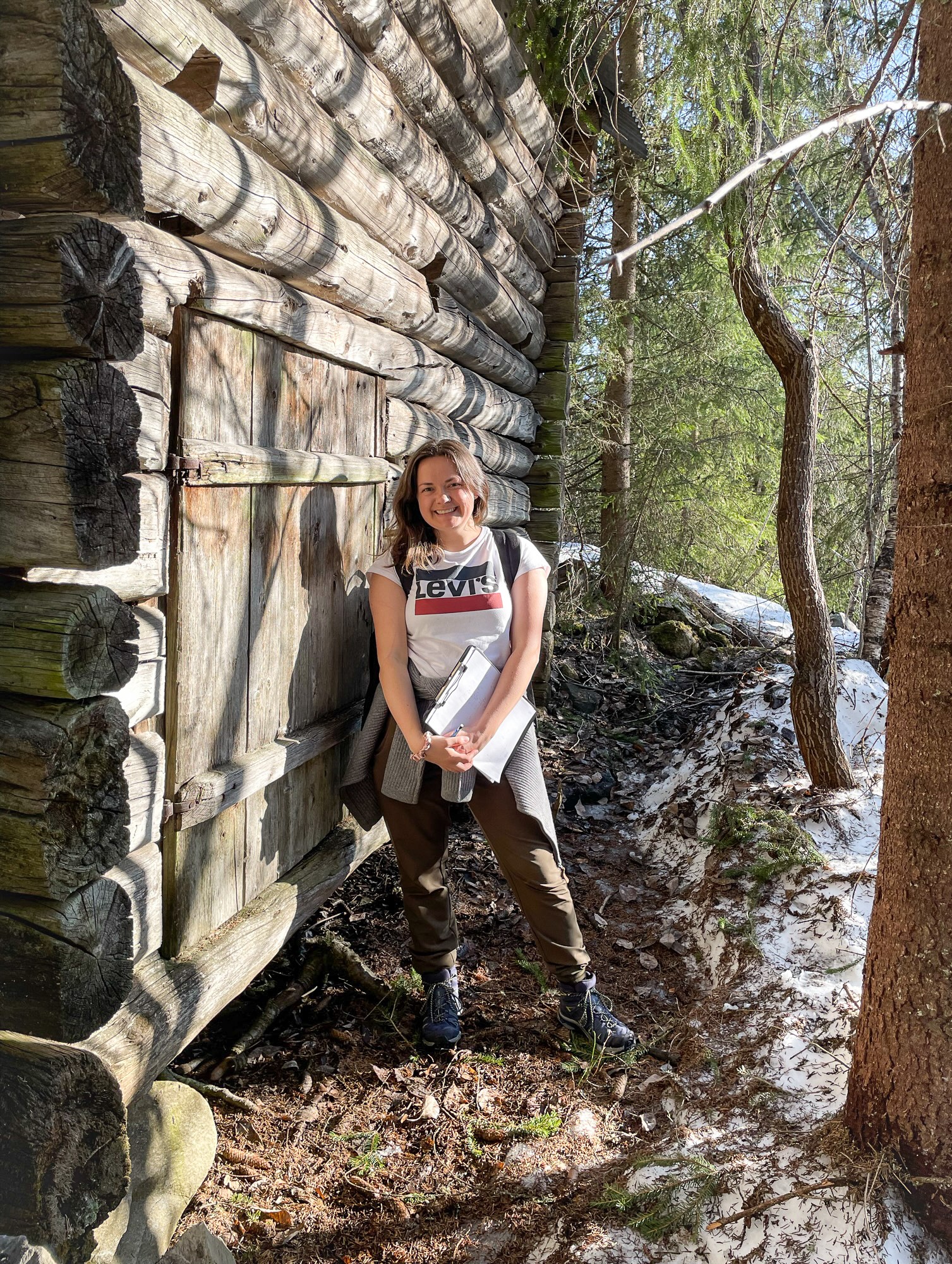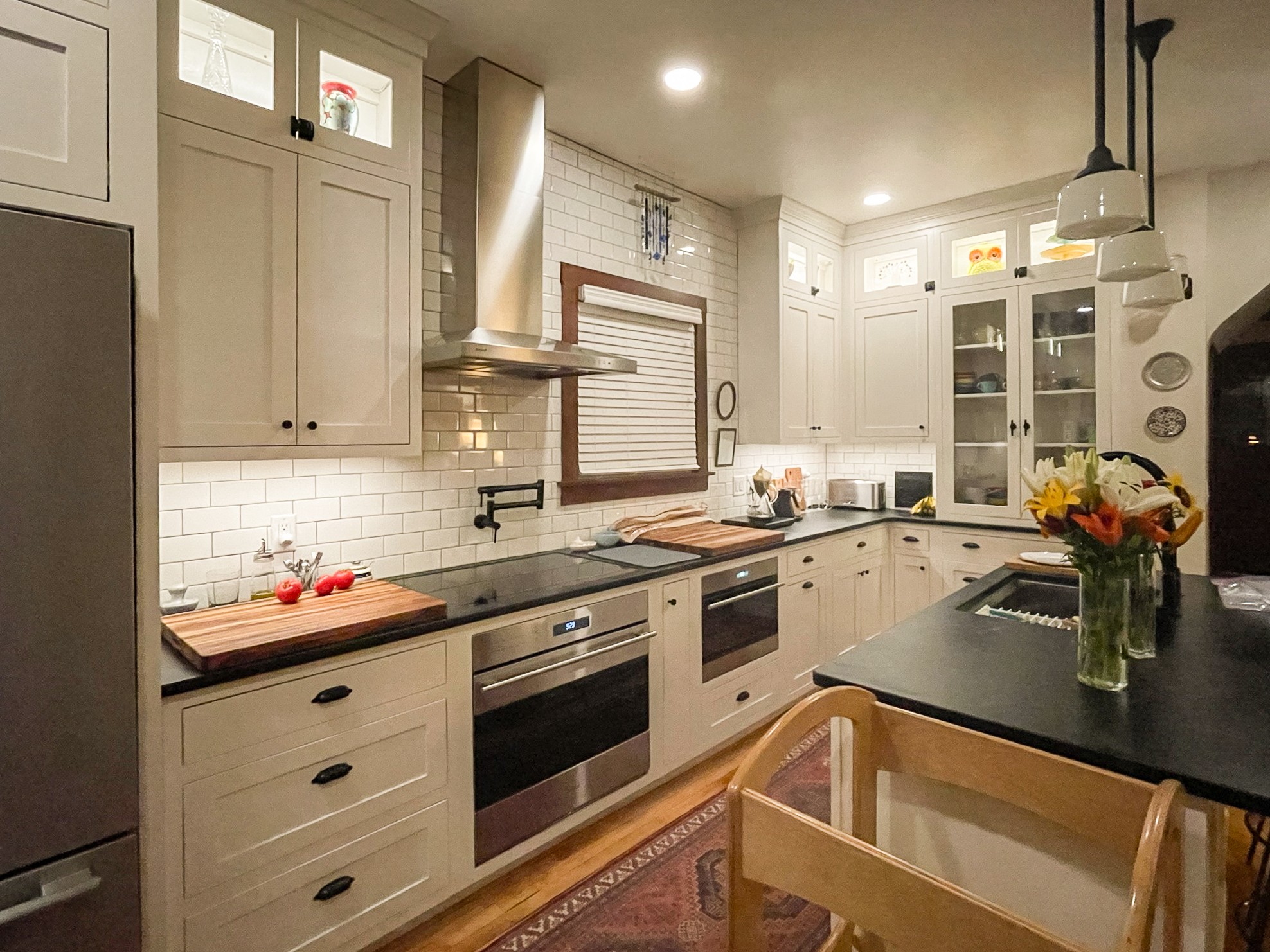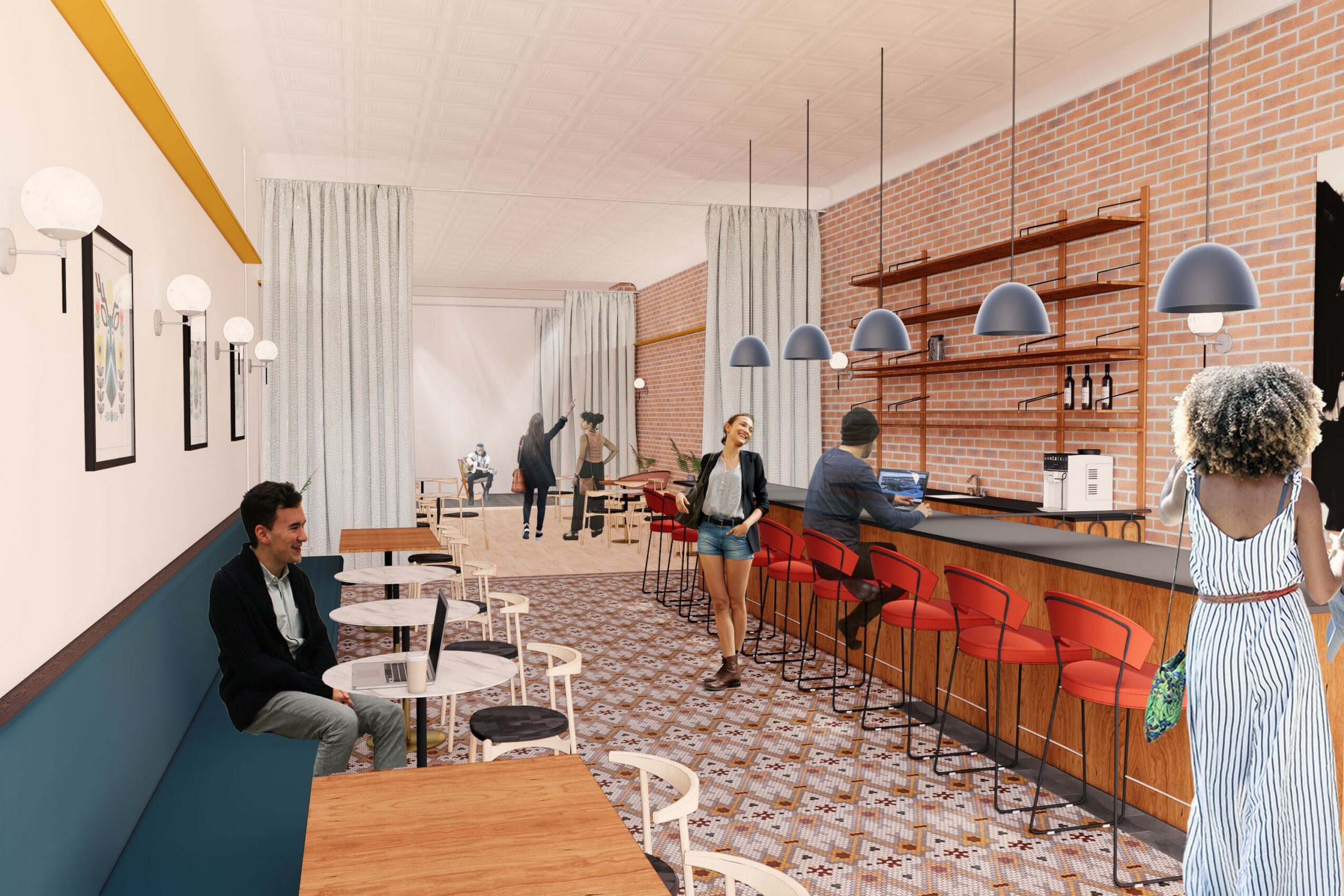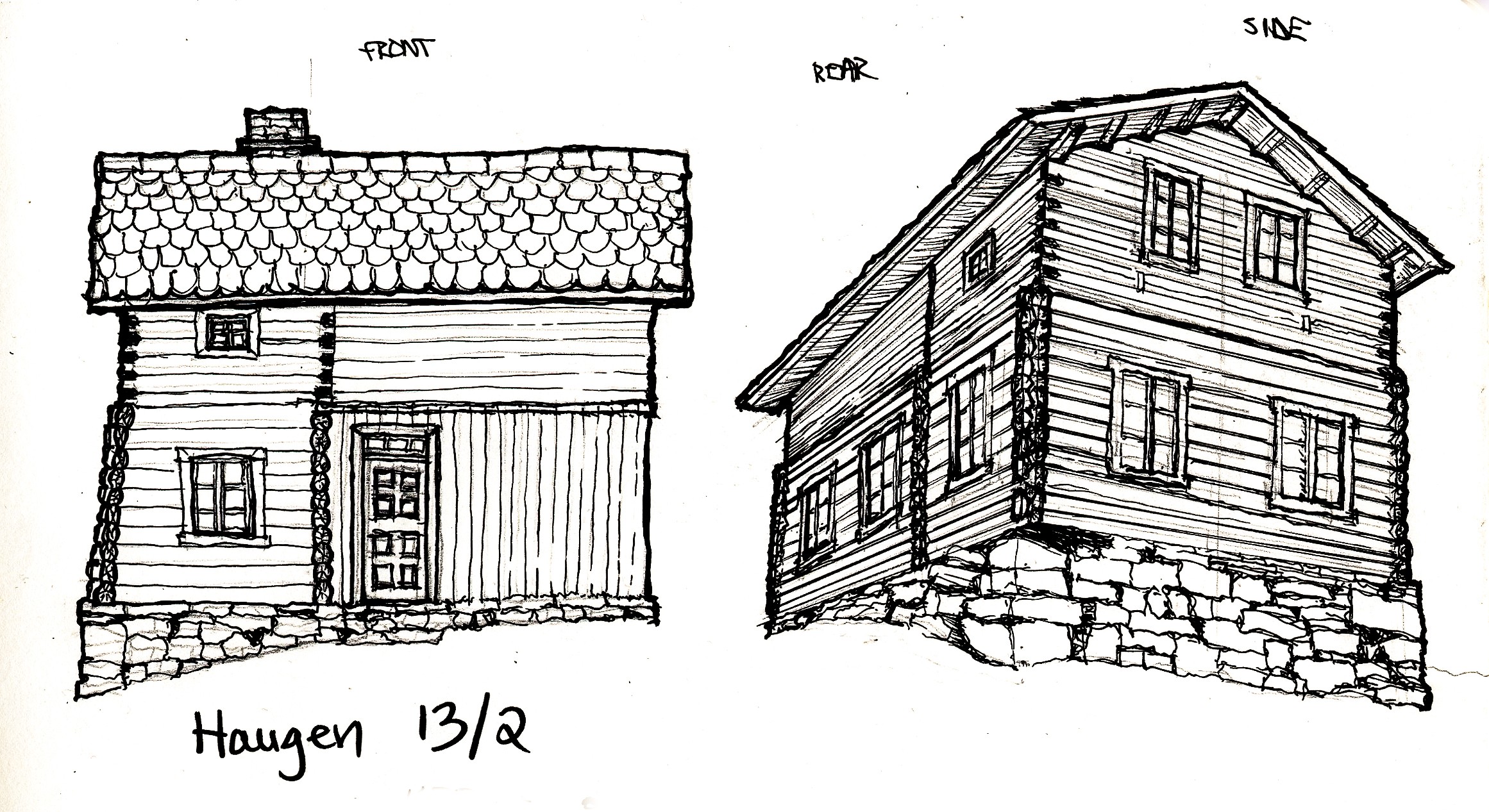

Today we’d like to introduce you to Miranda Moen.
Alright, so thank you so much for sharing your story and insight with our readers. To kick things off, can you tell us a bit about how you got started?
Hi, my name is Miranda Moen and I am an architectural designer and researcher originally from rural southeastern Minnesota.
Growing up next door to my grandparent’s farm, I am well-attuned to rural life. My inspiration to study architecture came from observing farmhouses and outbuildings. The structures I grew up around dated from the late nineteenth century all the way up to mid-twentieth century. I often found myself wondering about their cultural origins – from the materials used to their overall form and their functional purpose. Did they contain any indicators of our cultural history? Were they a product of pure function or was there a small root of building traditions handed down from my ancestors still contained inside? As a working farm, my family members would adapt and move them to suit their needs and I loved investigating how and why they were built as they were.
When I first began my architectural studies, however, I quickly became aware of the fact that most architects did not work on the rural building types that had inspired me. In addition, there were virtually no career paths into a rural-based architectural practice. Confronting this barrier motivated me to seek out other designers and architectural practices that valued rural work in the hope of finding mentorship opportunities and collaborators. In 2015, I graduated from the University of Minnesota-Twin Cities with a Bachelor of Design in Architecture and then from Iowa State University with a Master of Architecture degree in May 2019. After graduation, I started freelancing with another architect who specialized in rural community development and was lucky enough to work on a couple of inspiring, creative projects in small towns. This includes the Yes House project, a two-story Main Street storefront building renovation that we designed as a creative hub for local artists, which I am still engaged with today. A year and a half later, after witnessing the potential for projects in non-metropolitan areas, I established my own business in Austin, Minnesota called MO/EN Design Practice in 2020. I now operate as a regional design and research practice, to serve rural communities through cultural heritage research, attainable architecture, and creative projects that ignite economic development. As for the research portion of my practice, in 2022 I was awarded a Fulbright U.S. Student Fellowship to Norway and subsequently spent eight months analyzing the architectural parallels between nineteenth-century houses in Norway and Norwegian-American immigrant-built houses in the United States. This experience in Norway deeply informed my creative process as an architectural designer, for new builds and renovations alike.
Can you talk to us a bit about the challenges and lessons you’ve learned along the way? Looking back would you say it’s been easy or smooth in retrospect?
As you might expect, it has not always been a smooth road. There were many times when I felt that what I was hoping to build creatively, and as a viable business, was simply too “out there.” However, what I realized over the years is that all of the quirky, unique aspects of my practice – integrating research and a unique knowledge of Norwegian building customs into my projects – fueled my creative drive. I decided to embrace it and just keep myself open to how and when these aspects of my passion may coincide with my business.
Going back to the beginning, I officially started my business during the pandemic – in August of 2020. At that point, I had been freelancing for over a year, and was slowly building my business standards and practices so the pandemic did not initially derail progress establishing my business. Rather, it was when I was awarded the Fulbright research fellowship in Norway, the start of which was subsequently delayed for about one year, that my business was impacted. During that year of uncertainty, I had to decline taking on projects as there were about four different periods where I thought I was leaving for Norway at any time. Looking back, I should have just taken on some more work, but I wanted to make sure I was there and available for my clients and not leave the country leaving them without assistance. I am a very empathetic and caring person, and in my business, people come first.
However, despite the loss of income, the slow-down of work ended up providing some much-needed time that I could dedicate to research. During this period, I researched existing Norwegian-American houses in my hometown area before leaving for Norway. This became formative for the research branch of my practice. I am now working to incorporate research as an anchor in my business where I can provide it as a service for clients and continue working towards research articles and book publications on material culture and working-class vernacular architecture both in Norway and the United States.
Lastly, as with any start-up, it is hard to build your client base and get into local networks in unfamiliar areas. Since I moved to Austin, Minnesota in 2019, the first three years of my business were mostly about building relationships and slowly building experience. This was the case with my immediate surrounding area of southern Minnesota but also with long-distance projects I was working on in West-Central Minnesota. At this point in my business, I have built a great foundational knowledge of regional construction networks that are made up of local lumber yards, contractors, and professionals to partner with – all critical to producing a high-quality project, especially in rural areas.
Thanks – so what else should our readers know about MO/EN Design Practice, LLC?
I am an architectural designer currently working toward architectural licensure. I work and collaborate with architects on commercial projects and perform small residential projects myself. I offer a variety of services – ranging from feasibility studies, concept plans, and code analysis to project management and full-service architectural design through permit and construction. As a small business, I am flexible in the scope of services I provide to fit the client’s needs and partner with other necessary professionals to make sure the job gets done right. Overall, my work seeks to increase the financial and geographic accessibility of design services to small towns and working-class populations disproportionately impacted by the lack of design professionals in these areas. I’m known for my thoughtful design process and empathetic level of care for the client’s needs in both design and project management. The client always comes first.
While I work on many types of projects, I am particularly drawn to projects where I can utilize my knowledge of Norwegian and Norwegian-American building history. This includes architecturally documenting and researching immigrant-built houses, assisting clients with historical renovations, or utilizing this knowledge to create a modern take on Nordic design. Furthermore, my design process is inspired by both research and historical precedent. While I do more than just Norwegian-inspired architectural work, this aspect of my business is quickly becoming a specialty. I have about eight years of experience studying Norwegian and Norwegian-American building customs.
It all started with a six-week Norwegian Architecture and Design course at the University of Oslo-International Summer School in 2017. The experience reignited my passion for rural architecture and vernacular buildings and shortly thereafter I began graduate school at Iowa State University. During this time I created independent study courses where I investigated rural architectural practices and the roots of Norwegian-American farmsteads in Minnesota. The culmination of this work slowly evolved into a research proposal to visit Norway and comparatively study the architectural parallels between Norwegian houses and Norwegian-American houses built by early immigrants. In 2022, I officially began a Fulbright research project called “Ethnicity, Class, and Regional Building Styles: The Foundation of Immigrant Architecture” in Norway. This resulted in a significantly deepened knowledge of Norwegian building customs and an understanding of how they are reflected in dwellings found in early Norwegian settlement areas in the Upper Midwest. At this point in my work, I am known for my geeky interest in Norwegian building customs and am currently integrating this knowledge into a modern Nordic-inspired cabin project with hopes of publishing a book in the future as well.
So, before we go, how can our readers or others connect or collaborate with you? How can they support you?
I am always looking for tradespeople and design professionals who have experience in historic buildings and techniques to collaborate with – especially those who share an affinity for thoughtful handcrafts and detail. I would love for anyone with this interest and skill set to reach out to me to connect.
Contact Info:
- Website: https://www.moendesignpractice.com/
- Instagram: https://www.instagram.com/moen.designpractice/
- Facebook: https://www.facebook.com/moen.designpractice
- Linkedin: https://www.linkedin.com/in/miranda-moen/















